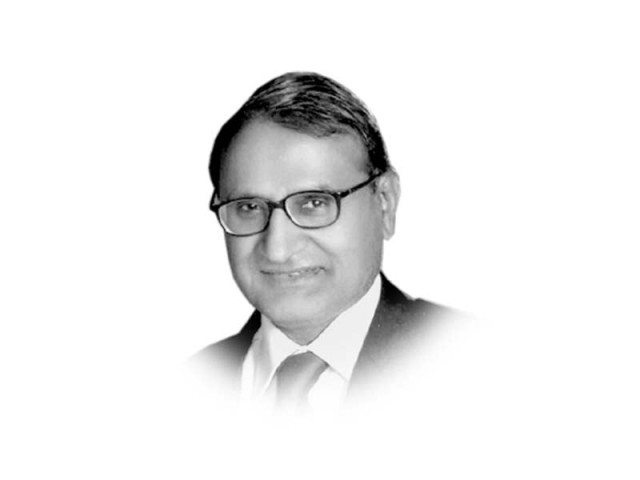State Bank falls in line
Inflation is not just a monetary phenomenon. Data on inflation kept staring in the face of rapidly rising policy rate

May 5, 2019. By Reza-e-Elahi, a magna cum laude governor lands in the State Bank of Pakistan. Backed up by sovereign guarantees from the global lender of the last resort and reassuring the nervous natives by waiving a (revocable?) resignation, he quickly set out to declare the independence of the bank, essentially from that mother of all economic evils, the Ministry of Finance. As the country embraced the structural reform agenda in the late 1980s, this ministry snatched the economic leadership from an ailing Planning Commission in the name of effective policy coordination. As a true papal representative, the new governor would have none of this. He brought the rupee down with such lightning speed that left even the Prime Minister wondering in full public view. Overnight, the external debt servicing bill of the Economic Affairs Division shot up in equal measure. While the Ministry of Finance was asleep, he scaled up the policy rate to Himalayan heights, adding trillions to the burden of domestic debt. The end of the fiscal deficit financing by the State Bank was another blow. In less than a month, the policy rate increased by 250 bps to 13.5% and kept there until March 17, 2020. Chasing an inflation target with a mouth-watering policy rate brought in hot money to show foreign exchange reserves beaming with joy. But for how long, O’ Lord, how long? As for inflation targeting, Tagore’s famous line — “not the gate but the chase” — comes to mind.
In the wake of the corona pandemic in March this year, the State Bank kept to the script by reducing the policy rate by just 75 bps. It woke up to the seriousness of the situation only after the government announced the injection of liquidity of around Rs1.25 trillion. In quick succession of the meetings of the Monetary Policy Committee, the policy rate was brought down to 7% by June 25, 2020. The script was completely destroyed as the State Bank went further by extending concessional financing of Rs1.58 trillion that exceeded the government package.
In April, the deft Ministry of Finance thwarted the State Bank’s attempt to achieve what it has always dreamed of — the burial of the Monetary and Fiscal Policies Coordination Board. With the composition of one (Governor) against the entire economic team of the government, the board has a chequered history. Moin Qureshi’s caretaker government issued an ordinance to ensure the State Bank’s autonomy. Instead, the Act of 1994 created this board. In its last meeting, the Adviser on Finance made it clear that the board was mandated to coordinate all economic policies to effectively achieve the targets fixed by the government. For the first time, a State Bank governor conceded that the preparation of a macroeconomic framework was the joint responsibility of the board and welcomed the constitution of a technical committee for the purpose. Curiously, he admitted that the current policy rate of 7% would support economic recovery, while various policy and administrative measures taken by the federal and provincial governments would ease the inflationary pressure. Inflation, after all, is not just a monetary phenomenon. Data on core inflation kept staring in the face of rapidly rising policy rate.
Following this abject surrender, the Governor should perhaps pay some attention to the lesser files piling up on his desk. One relates to the appointment of SBP Chairs. Some very senior economists were interviewed in this month last year. As per the official website, the Chairs remain vacant. Is he waiting for a magna cum laude from you-know-where?
Published in The Express Tribune, October 2nd, 2020.
Like Opinion & Editorial on Facebook, follow @ETOpEd on Twitter to receive all updates on all our daily pieces.















COMMENTS
Comments are moderated and generally will be posted if they are on-topic and not abusive.
For more information, please see our Comments FAQ